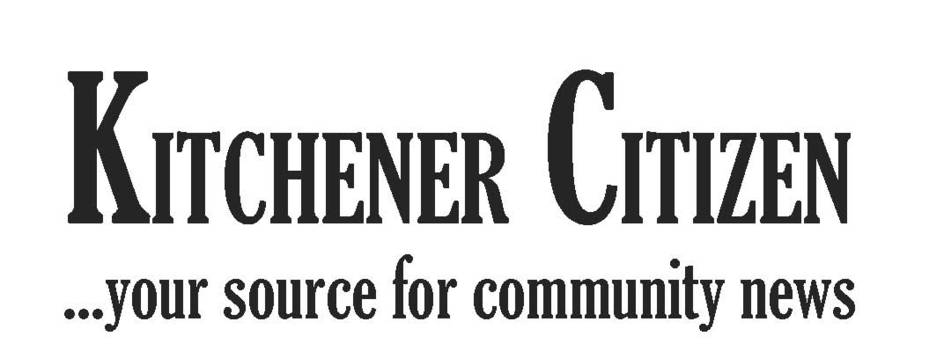

Neighbourhood Strategy aims to include residents
in decisions about neighbourhoods
in decisions about neighbourhoods
About 40 community members attended a meeting to brainstorm ways to get people more involved in the consultation process the city will use to develop its new Neighbourhood Strategy. The consultation, to take place in the spring and summer of 2016, will be the largest ever attempted by the City of Kitchener.
For News Tips & Advertising call...
Kitchener East - 519-578-8228
Kitchener West - 519-394-0335

By Carrie Debrone
Kitchener Citizen
December 3, 2015
In the spring and summer of 2016, the City of Kitchener plans to complete the largest public consultation in its history as it attempts to find out from residents how to build great neighbourhoods.
In the first in a series of meetings to determine how best to conduct the consultation, the City of Kitchener’s Neighbourhood Strategies’ 23-member committee hosted a community partners meeting on November 19, talking with about 40 community members to get their thoughts on the best way to get people involved, engaged and excited about the consultations.
The group included representatives from the Salvation Army, multicultural organizations, the police, the YMCA, the Crime Prevention Council, fire fighters and neighbourhood associations.
The meetings will help the city to develop a Neighbourhood Strategy that will guide planners as they consider future developments and require them to consider the strengths of Kitchener’s diverse neighbourhoods.
It is hoped the new strategy will get people working together in their neighbourhoods, and will recognize and celebrate the unique strength and identity of each neighbourhood.
Michael May, the city’s deputy chief administrative officer, said the new strategy will allow the city to change its current planning model to one that’s much more collaborative, shifting the role of city staff and politicians, who are now the sole “rule makers’, to neighbourhood supporters.
He explained that, currently, the city only consults residents when there is a one-off project or on contentious issues. In the past, he said, the city has thought of itself as a collection of facilities, an approach that he described as “disjointed”.
“We seldom ask people what can we do to make your neighbourhood great,” he said, adding that the current consultation model is an “outdated approach.”
“We already have thousands of neighbourhood partners,” he said, adding that the city values input from these people, wants to nurture its relationship with its neighbourhoods, and wants to get even more residents involved as it gathers ideas from everyone in every neighbourhood on their neighbourhood’s unique places and spaces, people and groups, and physical forms.
“We’re going to be asking, ‘How can we coordinate our efforts to benefit you?’ ” May said.
Mike Farwell, co-chair of the Neighbourhood Strategy Committee, described neighbourhoods as the “backbones of the city.”
“We are only as strong as our weakest neighbourhood,” he said, adding that the consultation will not provide neighbourhoods with a vision. Instead, he said it will encourage neighbours to create their own vision.
He said the committee has already established some rules about the consultation process, including not creating red tape, not taking a top down approach, not ignoring what already works in neighbourhoods, not being negative, and engaging people who may not have been engaged before.
“It’s not a one-size fits all approach,” he said. “Every neighbourhood is different and every neighbourhood can be great.”
Last summer the city surveyed residents by providing lemonade stands at city events where residents could come for a refreshing drink and answer questions about what they loved about their neighbourhood, what makes their neighbourhood great, and how it could be better.
The city received 1,308 surveys from the 27 Lemonade Stand consultations it conducted, and results show that 37 per cent of people define their neighbourhood as a geographical space anywhere from 6 to 20 streets from their home.
Improving parks was the first response to the questions about what you would like to change in your neighbourhood.
The survey results also show that 24 per cent of people said they currently spend time with their neighbours, and people said the top places they like to hang out in their neighbourhood are parks (15%), at home (15%) and on trails (10%).
Results show 29 per cent of people consider the transportation network in their neighbourhood as the most important part of the neighbourhood, followed by natural resources (25%) and heritage resources (11%).
During the session, community members were divided into groups to brainstorm ideas about how to effectively build community, engage people, and communicate well.
The Neighbourhood Strategy Committee will be continuing its discussion of how to proceed with the spring consultation by asking for input from local faith groups, sports groups, ethnic and social groups in an attempt to get input from as many sectors of the population as possible before rolling out the consultation in the spring.
The project team members are: Andrew Bieronski, Nancy Bird, Melissa Bowman, Cameron Dearlove, Michelle Drake, Mike Farwell, Mark Hildebrand, Greg Hummel, Graham Jeffery, Darren Kropf, Chris Letizi, Keghani Mardikian, Michael May, Laura McBride, Doug McKlusky, Juanita Metzger, Nadia Muhammad, Janice Ouellette, Frank Prospero, Justin Readman, Brooke Robinson, Brandon Sloan, Paige Sweeney, Rohan Thompson, Andrew Tutty, Tristan Wilkin and Renate Willms.
For more information about the project visit www.kitchener.ca/neighbourhoodstrategy
Kitchener Citizen
December 3, 2015
In the spring and summer of 2016, the City of Kitchener plans to complete the largest public consultation in its history as it attempts to find out from residents how to build great neighbourhoods.
In the first in a series of meetings to determine how best to conduct the consultation, the City of Kitchener’s Neighbourhood Strategies’ 23-member committee hosted a community partners meeting on November 19, talking with about 40 community members to get their thoughts on the best way to get people involved, engaged and excited about the consultations.
The group included representatives from the Salvation Army, multicultural organizations, the police, the YMCA, the Crime Prevention Council, fire fighters and neighbourhood associations.
The meetings will help the city to develop a Neighbourhood Strategy that will guide planners as they consider future developments and require them to consider the strengths of Kitchener’s diverse neighbourhoods.
It is hoped the new strategy will get people working together in their neighbourhoods, and will recognize and celebrate the unique strength and identity of each neighbourhood.
Michael May, the city’s deputy chief administrative officer, said the new strategy will allow the city to change its current planning model to one that’s much more collaborative, shifting the role of city staff and politicians, who are now the sole “rule makers’, to neighbourhood supporters.
He explained that, currently, the city only consults residents when there is a one-off project or on contentious issues. In the past, he said, the city has thought of itself as a collection of facilities, an approach that he described as “disjointed”.
“We seldom ask people what can we do to make your neighbourhood great,” he said, adding that the current consultation model is an “outdated approach.”
“We already have thousands of neighbourhood partners,” he said, adding that the city values input from these people, wants to nurture its relationship with its neighbourhoods, and wants to get even more residents involved as it gathers ideas from everyone in every neighbourhood on their neighbourhood’s unique places and spaces, people and groups, and physical forms.
“We’re going to be asking, ‘How can we coordinate our efforts to benefit you?’ ” May said.
Mike Farwell, co-chair of the Neighbourhood Strategy Committee, described neighbourhoods as the “backbones of the city.”
“We are only as strong as our weakest neighbourhood,” he said, adding that the consultation will not provide neighbourhoods with a vision. Instead, he said it will encourage neighbours to create their own vision.
He said the committee has already established some rules about the consultation process, including not creating red tape, not taking a top down approach, not ignoring what already works in neighbourhoods, not being negative, and engaging people who may not have been engaged before.
“It’s not a one-size fits all approach,” he said. “Every neighbourhood is different and every neighbourhood can be great.”
Last summer the city surveyed residents by providing lemonade stands at city events where residents could come for a refreshing drink and answer questions about what they loved about their neighbourhood, what makes their neighbourhood great, and how it could be better.
The city received 1,308 surveys from the 27 Lemonade Stand consultations it conducted, and results show that 37 per cent of people define their neighbourhood as a geographical space anywhere from 6 to 20 streets from their home.
Improving parks was the first response to the questions about what you would like to change in your neighbourhood.
The survey results also show that 24 per cent of people said they currently spend time with their neighbours, and people said the top places they like to hang out in their neighbourhood are parks (15%), at home (15%) and on trails (10%).
Results show 29 per cent of people consider the transportation network in their neighbourhood as the most important part of the neighbourhood, followed by natural resources (25%) and heritage resources (11%).
During the session, community members were divided into groups to brainstorm ideas about how to effectively build community, engage people, and communicate well.
The Neighbourhood Strategy Committee will be continuing its discussion of how to proceed with the spring consultation by asking for input from local faith groups, sports groups, ethnic and social groups in an attempt to get input from as many sectors of the population as possible before rolling out the consultation in the spring.
The project team members are: Andrew Bieronski, Nancy Bird, Melissa Bowman, Cameron Dearlove, Michelle Drake, Mike Farwell, Mark Hildebrand, Greg Hummel, Graham Jeffery, Darren Kropf, Chris Letizi, Keghani Mardikian, Michael May, Laura McBride, Doug McKlusky, Juanita Metzger, Nadia Muhammad, Janice Ouellette, Frank Prospero, Justin Readman, Brooke Robinson, Brandon Sloan, Paige Sweeney, Rohan Thompson, Andrew Tutty, Tristan Wilkin and Renate Willms.
For more information about the project visit www.kitchener.ca/neighbourhoodstrategy